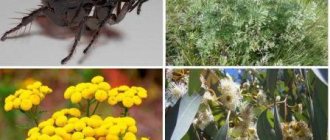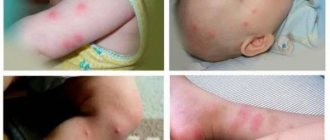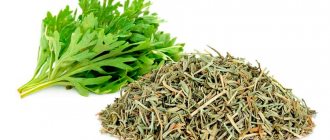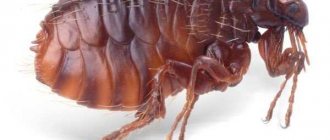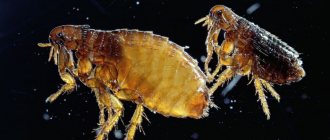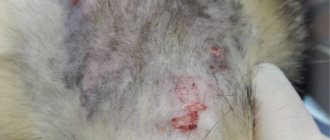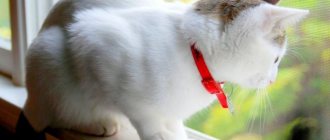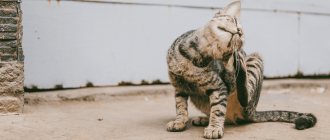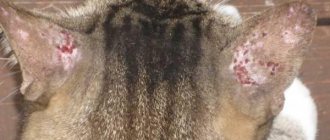Owners of four-legged pets periodically carry out parasite prevention and are faced with the need to remove blood-sucking insects and lice-eaters. Industrial drugs are effective, accessible, but have side effects. But I want to rid the animal of its painful presence as soon as possible, without causing harm to its health.
There is an exit. It has long been known how to remove fleas from cats at home without a veterinarian, using folk remedies. This method is rarely used, but in vain. Today we are getting acquainted with methods of getting rid of fleas without chemicals.
- Causes of fleas in cats
- Signs of fleas
- Effective folk anti-flea remedies Wormwood against parasites
- Vinegar for fleas
- Garlic for fleas
- Salt remedies for cat fleas
- Anti-flea shampoo recipe
- Geranium decoction
- Citrus fruits against parasites
- Essential oils to protect cats from fleas
Features of the insect
What are fleas? These are blood-sucking parasites. They are quite unpretentious and tenacious. Squashing a flea is not easy because of its body structure. The parasite has legs designed for jumping long distances. Fleas can go without food and survive for weeks this way. These insects are very prolific, which also poses a serious problem.
What do fleas look like and why are they dangerous?
Fleas have a mouthpart that allows them to bite through the skin of an animal and feed on its blood. Thanks to their laterally flattened body and small, rounded head, insects can move quickly through cat fur. On the surface of the flea's body there are bristly ridges, which also help the parasite cover distances on the animal's body. The flea has six legs, the back two of which are especially well developed. This allows fleas to jump up to half a meter.
These parasites pose a serious danger primarily to kittens, as well as weakened, sick and old animals. Fleas can cause anemia in kittens because one parasite drinks large amounts of blood. In the most advanced cases, fleas can lead to the death of the animal.
In addition to the fact that fleas feed on the blood of animals, they are also carriers of many dangerous diseases. For some types of helminths, fleas are an intermediate host. An animal can accidentally swallow a flea and then the helminth eggs enter the body directly, where they become larvae and then turn into adult parasites.
At the same time, the cat’s skin and fur also suffer greatly. The coat may fall out, lose shine and look unkempt.
Types of fleas in cats
The most common flea that affects cats is C felis, also known as the cat flea. The size of parasites of this species is small - from 2 to 4 mm. They do not have wings, and their small head and laterally flattened body allow them to easily move among the cat’s fur, clinging to the hairs with bristles and spines.
Where do fleas come from?
Fleas are parasites that are active all year round. They live not only on the street, but also in the basements of residential buildings and entrances. You may not even notice the larval eggs hidden in the corners of your apartment: behind baseboards, in cracks, in furniture and folds of linen. The larvae feed on dust and other contaminants, and then, upon reaching sexual maturity, migrate to a pet. Therefore, even a domestic cat can become infected with parasites that you accidentally brought from the street on your clothes or shoes.
Symptoms of flea infestation
You won't be able to avoid noticing fleas on your cat for a long time. The animal quickly begins to show the following signs of the disease:
- An infected cat begins to actively scratch and bite itself, trying to catch parasites.
- The animal is nervous and meows.
- Black crumbs on the skin are parasite excrement and dried blood from scratching bites.
- When examining the cat's back or scruff, you may notice bite marks.
- The presence of fleas themselves on the animal’s fur.
Are fleas the same on dogs and cats?
It happens that dogs and cats suffer from the same type of fleas. Dogs and cats can be parasitized by a specific type of parasite - the cat flea. At the same time, there is also a dog flea, which parasitizes exclusively on dogs.
How often can fleas be poisoned?
The procedure for killing fleas using special drops is carried out once. If necessary, the procedure is repeated after two months. At the same time, the room is treated with special means: the floor, baseboards and the animal’s sleeping area.
Signs of fleas
Fleas Fleas are ectoparasites that feed on the blood of mammals and humans. They can parasitize almost any animal, be it a dog, cat, rabbit, rat, and pass from one type of animal to another. Insects have a tiny flattened body, on average its size varies within 2-3 mm. The color of the chitinous cover is brown with shine. Due to its jumping ability and miniature size, it is very difficult to see a flea.
Ectoparasites are individuals that temporarily or permanently parasitize external organs and skin.
An animal can pick up parasites while walking, or a person, without knowing it, brings larvae or adults on his clothes or shoes to his apartment. Once on a cat, the flea bites through its skin and begins to feed, after which active mating of the parasitic adults begins, and the female lays eggs. Under favorable conditions, a new generation of adults will appear in 2-3 weeks.
You can determine that a kitten or cat is bothered by fleas by the following signs:
- the animal itches frequently;
- sleeps restlessly and jumps up during sleep;
- appetite decreases;
- a careful examination of the back, neck, and abdomen can reveal waste products of fleas: tiny black excrement, sticky secretions from eggs and the parasites themselves;
- the appearance of wounds on the skin;
Fleas on cats - For hairless cats, it is necessary to wipe the skin with a napkin; the presence of brown spots on it indicates that the animal is bothered by fleas.
Fleas are carriers of various types of diseases and endoparasites - worms. When identifying bloodsuckers on your pet’s body, you need to take care not only of how to remove fleas from a cat, but also to disinfest the entire room.
Are fleas dangerous for humans?
Fleas can cause discomfort not only to pets, but also to humans. At times, parasites bother people by biting them, and any fears about this are not unfounded. After the bites of these parasites, unpleasant consequences can be observed on the skin in the form of blisters and papules. In addition, fleas can cause a skin infection in humans, which manifests itself in the form of ulcers or abscesses.
A person can become infected with helminthiasis by accidentally getting cat fleas into their mouth. The disease is asymptomatic in most cases.
Are cat fleas transmitted to humans? This depends on the gender and age of the pet. For example, a kitten's fleas are more likely to be transmitted to humans and begin to bite both the animal and its owner. Fleas are transmitted from cats to humans more often than from cats.
Use salt and soda
Other folk remedies are also used to remove fleas. For example, a mixture of salt and soda in powder form, which is used to treat carpets and cat litter. Treated carpets and upholstered furniture are vacuumed and brushed.
The cat can be washed in a saline solution, which is prepared in the ratio of 1 glass of salt per 10 liters of water. The cat is placed in a warm saline solution for 2-3 minutes so that only the head remains on the surface. Then the animal must be washed with soap and washed with clean water.
Traditional methods for getting rid of fleas on cats
Our ancestors often used various natural methods to get rid of fleas from cats. These were simple and effective methods. Unlike modern remedies, traditional methods are less harmful and act by repelling parasites.
Sagebrush
This herb is often used in the fight against fleas, because wormwood repels them with its specific smell. To get rid of parasites in the house, spread dry wormwood around the apartment, and also rinse the cat's fur after bathing with a decoction of wormwood.
Garlic
The garlic smell also forces fleas to leave the animal alone. To prepare garlic tincture, take 6-7 large cloves of garlic. Then grind them with a squeezer and pour 3-4 glasses of water at room temperature. The infusion is prepared within 12 hours. Wipe the cat's fur with the prepared infusion, but do not allow the garlic to get inside, otherwise it may cause poisoning.
Vinegar
Using vinegar is a rather drastic measure, but this method helps to quickly get rid of fleas. Mix vinegar, ammonia and any floral cologne in equal proportions. Pour the resulting mixture into a spray bottle and spray the cat's fur. Then place the animal in a plastic bag without covering the animal's head so that the cat can breathe. Hold your pet for 7-10 minutes, then wash and comb the pet's fur thoroughly to remove any dead parasites.
Pine sawdust
Fleas hate the smell of pine. To prevent fleas, you can fill the animal's bed with small pine sawdust or place small bags of sawdust throughout the apartment.
Salt
Take 1 kg of table salt and dilute it with a little water. The salt should completely dissolve. Dilute the resulting mixture with 10 liters of warm water. Wash your cat in it for 5-7 minutes. All wool should be saturated with saline solution. Then bathe your cat in warm water.
Salt and soda
This method is suitable for killing parasite larvae on the carpet. Mix soda and salt in equal proportions and leave the resulting powder for ten hours. Then sprinkle the product on the carpet and spread it with a brush. After 4-6 hours, remove the powder from the carpet using a vacuum cleaner. Salt, getting on the body of the parasite, destroys it. As a result, not only the larvae will die, but also the adults.
Decoction of lavender and geranium
Pour 30 grams of lavender and geranium into 3 full glasses of clean water. The mixture is boiled, stirring, for 15–20 minutes. The resulting solution is cooled and filtered. The cat is bathed in this solution, as in regular shampoo. Be careful and avoid contact with the animal's mucous membranes.
Citruses and essential oils
Slice one lemon and pour 2 cups of warm water over it. Let it brew for a day in a dark place. Apply the finished product to your pet's fur using a spray bottle.
To treat wool, 2-3 drops of lavender, rosemary, geranium, mint or lemon oil per 3 glasses of water will be enough. Oils can be dripped onto the collar.
Anti-flea shampoo recipe
Take one third of baby soap, grate and mix with 3 glasses of water. Let the mixture simmer over low heat until it turns into a jelly. Let it cool, and then add one finely chopped onion, one egg yolk and a spoonful of nettle infusion. Lather your cat with this shampoo, leave it for 15–20 minutes and rinse well.
Tar soap
Beat the tar soap into a strong foam. Apply foam to your pet's fur and rinse off after 5 minutes. The procedure is carried out every 3-4 days until the parasites disappear completely.
Hydrogen peroxide
Place the cat in a basin and apply hydrogen peroxide diluted with water to its body. Be careful not to get hydrogen peroxide in your pet's eyes, mouth, or nose.
Advantages and disadvantages of folk remedies
Advantages of using traditional methods:
- the possibility of using many methods during pregnancy;
- you can combine several methods at once;
- no harmful effects on the body;
- budget savings.
Flaws:
- It is not always possible to get rid of fleas in one go;
- there is a risk of allergic reactions;
- some can be inconvenient to use.
If there are a large number of parasites, folk remedies often do not give the desired result and you have to resort to specialized drugs.
Safe pest control products
One of the important components of cat treatment is how safe the chosen method is for the pet’s health. To avoid harming your cat, you can opt for natural and safe products.
Combing out fleas
Short-haired cats can be combed with a fine-tooth comb. Brush the coat with a fine-tooth comb and then with a fine-tooth comb. Shake parasites from combs into a bowl of soapy water. In this way, you can remove some fleas from the skin of animals, but this will not completely solve the problem.
Herbal treatment and eco-collar against fleas
Some herbs, such as chamomile, rosemary, wormwood and wormwood, geranium and tansy, are considered natural remedies for fighting parasites. There are three ways to herbally treat an animal:
- Herbal rub. Soak a cotton swab in the herbal infusion and wipe the cat's fur.
- Herbal shower. Rinse your cat's fur with the herbal infusion and let it dry.
- Herbal powder. Sprinkle the powder on the areas where insects are most concentrated on the animal’s body.
To make your own eco-collar that is safe for your cat, you will need absorbent fabric. Sew a strip from it around the circumference of the animal’s neck, adding 2 cm to the length. Sew Velcro on both sides of the collar and treat the fabric with a special compound:
- 1 drop of lavender oil;
- 1 drop of thyme oil;
- 1 drop of eucalyptus oil;
- 1 drop of citronella oil;
- 5 ml alcohol;
- 10 ml jojoba oil.
Do not wring out the collar and place it on the animal's neck. After 30 days, replace the eco-collar.
Washing the bed, toys and cleaning the house
These harmful insects live not only on the animal, but also where the cat spends the most time. To kill any parasites living in your cat's bed, wash it in soapy, hot water at least once a week.
Aromatization of the room
If you have an aroma lamp, then you can scent the room. Use essential oils of lavender, thyme, rosemary, tea tree or eucalyptus.
You can also finely chop the garlic and place it on plates around the apartment. This smell will repel fleas.
If you like to grow flowers, then plant geraniums or lavender in pots.
Boosting immunity and love
Make your pet's diet balanced and add vitamins to it. The best option would be to switch to high quality food. Add brewer's yeast to your cat's diet - fleas cannot tolerate it.
Don't forget to show love and care. Give your pet attention and play with her. As a rule, happy animals do not get sick as often.
How to remove fleas from your home
To get rid of parasites in your home:
- First, wash the floor with a solution containing soap, alcohol, lavender or peppermint oil. Such strong odors will repel parasites.
Washing the floor with aromatic additives is a procedure that no parasite can withstand - Wash the walls and baseboards with the same solution. Keep in mind that fleas can rise to a height of up to a meter from the floor.
Be sure to wear rubber gloves when cleaning - Wash clothes, bedding, carpets, furniture covers and pet bedding.
Washing bedding and towels is an important step that will allow you to get rid of parasites forever - Take pillows, blankets and mattresses outside. Parasites cannot stand heat, cold and sunlight, so they will immediately run away from their homes.
- After the general cleaning is completed, place bunches of tansy, mint, wormwood or spruce branches in all corners.
The safest thing to do in your case is to use regular cleaning and a steamer, which will reduce the number of fleas.
Sergey
https://vetdoc.in.ua/kak-unichtozhit-blox-v-kvartire-sovety-veterinara.htm
in order not to harm yourself, use physical control measures - high temperature, if there is no steamer, you can use an iron with a steaming function to process the mattress; if the fabrics are natural, then you can simply iron them with an iron, there will still be a positive effect.
But treatments need to be done regularly - once a week. 2. When frosts begin, you can take the mattresses outside, if possible. Sergey
https://vetdoc.in.ua/kak-unichtozhit-blox-v-kvartire-sovety-veterinara.htm
Flea remedies for cats
If your cat is already suffering from fleas, it is best to consult your veterinarian. He will help you choose the appropriate treatment. The form of the product does not matter, but its effectiveness does. A good product should have a pronounced effect and be safe for the cat.
Drops on the withers
Drops are an effective remedy for parasites. They are applied to the animal’s withers near the neck and between the shoulder blades so that the cat cannot reach there. The drops kill adult parasites and also repel them and prevent them from remaining on the cat's fur. There is a large selection of drops on the market and you can easily find a suitable product, but under no circumstances use drops containing permethrin - this substance is dangerous and can cause poisoning in a cat or be fatal.
Shampoos
Shampoos are used when the animal is already infected with parasites. Lather your cat well with shampoo, avoiding contact with the eyes and ears. Leave the shampoo on the cat's fur for about 10 minutes and then rinse thoroughly, because the cat may get a dose of the drug during the licking process.
Collars
Depending on the manufacturer of the collar, its validity period is limited to 4 to 7 months. Collars made from amitraz, organophosphates and permethrin are very dangerous for cats, so they should not be purchased.
Powders, powders
As a rule, natural and safe ingredients are used in powder products. Powders and powders are suitable for both kittens from 3 months of age and pregnant cats. Using such products is quite simple: apply the powder to the animal’s body and thoroughly rub it into the skin. However, this option is not suitable for cats with long and thick hair.
Chewable tablets
Once in the animal’s body, the tablet is absorbed into the intestinal wall and dissolves in the blood. Thanks to the insecticidal composition of the drug, it will be enough for the parasite to drink the blood of the animal that took the pill in order to die.
Injections
Injections and pricks are not used as often in the fight against fleas in cats. Together with the injection solution, substances that help kill insects enter the animal’s body. But do not forget that injections can be hepatotoxic, so it is better to give preference to other means.
Vaccinations
Flea vaccinations are an effective method. By biting the vaccinated animal, the parasites receive a dose of poison, which causes paralysis and leads to death. To vaccinate your pet, you need to see a veterinarian, who will give him an injection. This procedure protects the animal for exactly one month.
Sprays
Flea sprays are available in the form of aerosols and cans. The product is quite effective, but not all animals will like it, because many animals are simply afraid of the sound of spraying. When treating cat fur, the spray should not get into the eyes, ears or mucous membranes. The cat's head is also treated: using a cotton swab soaked in spray.
Cedar sawdust or ground walnut shells
It's a known fact that fleas hate the smell of pine nuts—and your cat probably doesn't like it very much either.
However, you can try placing cedar shavings or ground shells around your cat's bedding or outdoors in the garden.
You can also spray cedarwood oil on your cat's fur, as it is a safe, non-toxic essential oil, or apply a few drops to a banana peel or even your cat's collar to keep bugs away.
Rating of the best remedies for fleas for cats and cats
There are a sufficient number of different drugs available on the anti-flea market. You can choose the right remedy based on the cat’s age, pregnancy, or the urgency of getting rid of parasites.
Flea shampoos
These flea treatments have a short-term effect. After bathing your cat, you need to rinse off the shampoo thoroughly so that by licking it off, your pet does not receive a dose of a toxic substance.
Spray Frontline
The product protects cats from fleas, and is also approved for use on kittens from the second day of life and on pregnant or lactating cats.
Drops on the withers "Bars"
The least toxic flea treatment for cats, which is highly effective. Suitable for cats from 8 weeks of age as a treatment and prevention for fleas.
Spray Hartz
The product can be used to treat kittens for fleas no earlier than 12 weeks of age. After a single treatment, harmful insects die within 5–10 minutes.
Drops on the withers "Lawyer"
The drops are suitable for cats from 9 weeks of age, as well as pregnant and lactating animals. The product has a protective and healing effect for 4 weeks.
Drops on the withers "Advantage"
The product helps rid your cat of fleas on the first day of treatment. The therapeutic effect of Advantage drops lasts for 4 weeks. Reduces the number of flea bites within 3-5 minutes after the parasites come into contact with the drug.
Bolfo aerosol against fleas for cats
The aerosol can be used to treat not only a sick animal, but also its bedding or other care items. Repeated treatment is carried out no more than once a week. The product is suitable for kittens from 3 months of age. Use for the treatment of pregnant and lactating animals is possible only after consultation with a veterinarian.
Drops on the withers for cats Stronghold
The drug has the following advantages: it dries quickly, is moisture resistant, has no unpleasant odor and stops the incubation of flea eggs. The drops can be safely used on kittens from 6 weeks of age.
Contraindications
Many folk remedies that repel and destroy fleas may also become unsafe for people prone to allergies. This primarily applies to herbs with a strong aroma - they can provoke allergic reactions. All components of antiparasitic agents should be carefully analyzed for individual intolerance to those who come into contact with them.
Some home remedies for fleas - such as vinegar, garlic, dust soap, ammonia, hydrogen peroxide - can be harmful to your pets in an overdose, and hellebore water is also dangerous for humans. Treatment with hellebore tincture should not be given to children and pregnant women, and it is better to carry out this procedure in a ventilated area. Remember: ingestion of even a very small amount of this toxic drug can lead to serious poisoning. Be careful and careful.
Removing fleas from kittens depending on age
The appearance of a kitten in the house is a joyful event. But it can be overshadowed by the appearance of uninvited guests in the house in the form of fleas. You should carefully choose flea products for kittens, since not all products are suitable for them and are selected depending on the age of the animal. You can remove fleas from a kitten in the following ways:
- Comb out parasites with a comb.
- Wash your kitten with flea shampoo.
- Use special drops on the withers, spray or flea collar.
Newborn kitten
Most flea medications are harmful to newborn kittens, so removing fleas at this age is a challenge. You cannot bathe kittens with flea shampoo at this age, so use a soft, thick comb to comb out parasites from the kitten. When combing out fleas, you need to apply pressure between your nails or with a hard object. A mother cat can independently rid her kitten of parasites using her teeth.
In kittens up to 1 month
If the number of fleas threatens the health or life of the baby, then you will have to bathe the kitten. You should not use special flea products; you will have to make do with baby or tar soap. Bathing water should be warm - 38–39oC. Bathing proceeds as follows:
- Pour water into a basin.
- Plug the kitten's ears with cotton wool.
- Wet the kitten with water and soap it. There is no need to wash the muzzle; it should remain dry.
- Lather your kitten for three minutes and then rinse off the lather thoroughly.
- Dry the animal with a soft cloth and comb out the fur.
Kitten of the second month of life
Most existing flea treatments are suitable for two-month-old kittens. You can bathe your kitten with anti-parasitic kitten shampoo and use some type of drops on the withers. But if the kitten is still feeding on mother’s milk, drops cannot be used on the withers. The cat may lick the drug from its fur, and some of it will pass into the milk, resulting in a negative effect on the kitten.
Kitten in the third month of life
As soon as the kitten has been weaned from its mother, in the third month of life it is already possible to use drops on the withers, sprays or flea collars.
Kittens from six months and older
To treat kittens from six months old, you can use all the remedies suitable for an adult cat:
- Flea collars.
- Flea sprays.
- Drops on the withers.
- Flea shampoos.
- Chewable anti-parasite tablets.
- Combing out parasites.
Anti-flea shampoo recipe
Homemade shampoo is another effective folk remedy that helps remove fleas from a cat. The ingredients for the recipe can easily be found in any home:
- 1 tbsp. water (if desired, you can replace it with infusion of wormwood, tansy or geranium);
- 1/3 bar of baby soap;
- 1 chicken egg yolk;
- a few drops of essential oil.
The soap is grated on a coarse grater and filled with water or herbal infusion. Stirring constantly, cook in a water bath until thickened. Remove from heat, cool, add yolk and butter. Mix thoroughly.
The shampoo is used immediately after preparation. Apply the product to well-moistened animal hair, leave for 10 minutes, then rinse thoroughly. A week later the procedure is repeated.
Eliminating the consequences of infection
To eliminate the consequences of flea infestation in the form of bites, you can use folk remedies. First you need to disinfect the bite sites with iodine, alcohol or antibacterial soap. Then you can apply a piece of ice or gauze soaked in cold water to the bite site. A longer lasting result is achieved by using Fenistil gel or Psilobalm. In addition to them, you can use tea tree oil, strong tea leaves or chamomile decoction. Soak a cotton pad in the liquid and apply to the bite areas.
Dishwashing liquid
Believe it or not, even the most gentle dish soap formulations have proven to be very effective in killing fleas. Dish soap breaks down the exoskeleton of fleas and kills them in minutes, even after it has been dissolved in water.
Simply wet your cat's fur—a spray can will do the trick—and gently apply dish soap to his or her fur (paying particular attention to areas where fleas usually hide) before rinsing it off.
To use dish soap to catch and kill the fleas that have made your home their permanent home, you can try filling a shallow dish with warm, soapy water and placing it near a light source. They will be drawn towards the light and drown in the liquid.
Preventive recommendations
To prevent parasites from lingering in your home, it is recommended to clean with a vacuum cleaner as often as possible. The vacuum cleaner bag must be shaken out immediately after cleaning. Thoroughly clean the space under furniture, corners, and cat litter. Clean all areas where the animal is, such as a car or carrier.
Keep your home clean so that pests do not have food in the form of various debris and dust. As a preventative measure, repellents containing pyrethrins can also be used. They help protect the area from fleas.
There are a huge number of ways to deal with fleas in cats. You can use both natural folk remedies and modern medications, collars and shampoos in the fight against these parasites. The main thing is not to neglect the treatment of your pet and carry out preventive measures. As a result, all your efforts put into fighting fleas on your cat will be rewarded with happy purring and love from your pet.
Prevention
It is recommended to replace ordinary beds with mattresses with pine needles. They will repel fleas and prevent them from laying eggs. You can place fresh lemon and orange peels around the house. Or dry them, grind them into powder and add them to water before washing the floors. Cleaning can be done with bleach by pouring it into a bucket.
As a preventative measure, a collar is made by folding the cotton fabric several times. It is stitched, resulting in a tight belt. Velcro is attached to the ends. Then soak the collar in a solution of lavender, rosemary and alcohol oils, add a little catnip. Attach the belt to the pet's neck. The flea protection effect lasts for a month.
Due to low toxicity, the effectiveness of folk remedies is reduced compared to drugs. Therefore, it takes longer to kill fleas. After the destruction of parasites, it is necessary to repeat the treatment monthly for preventive purposes.
